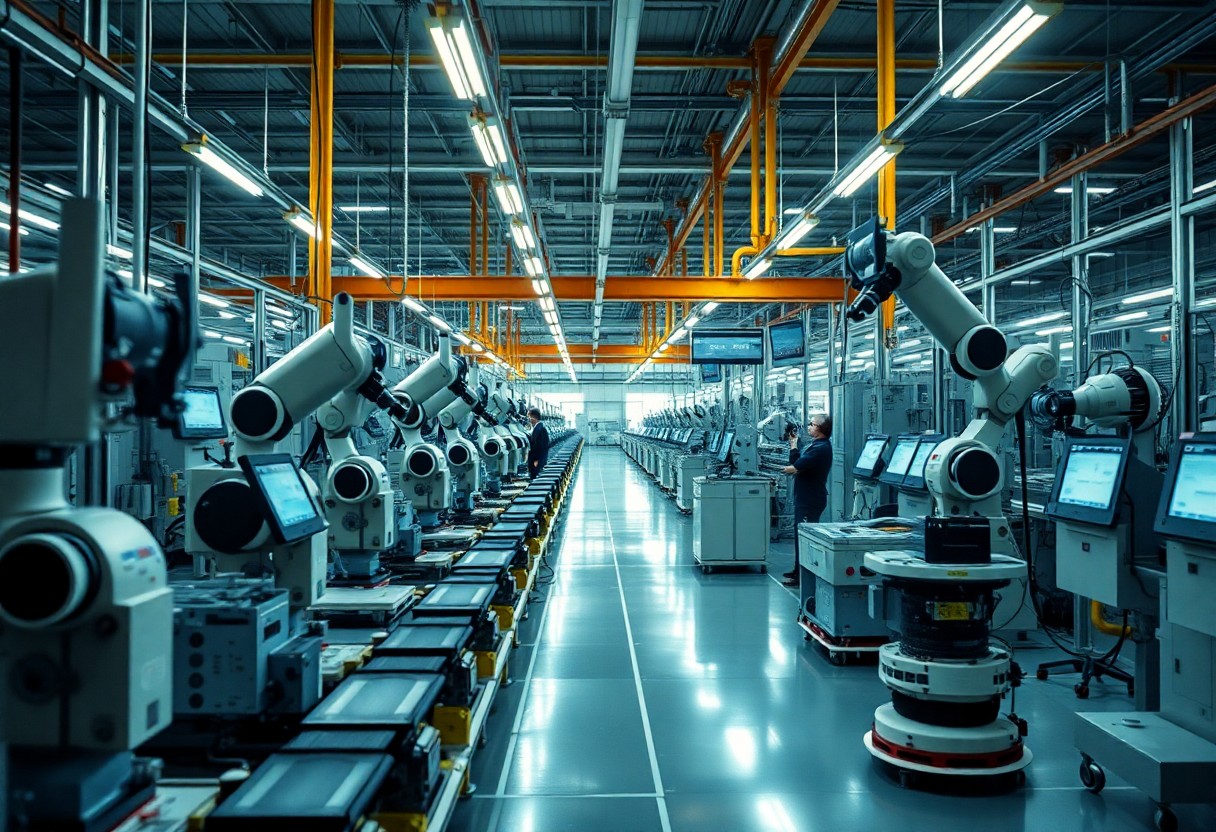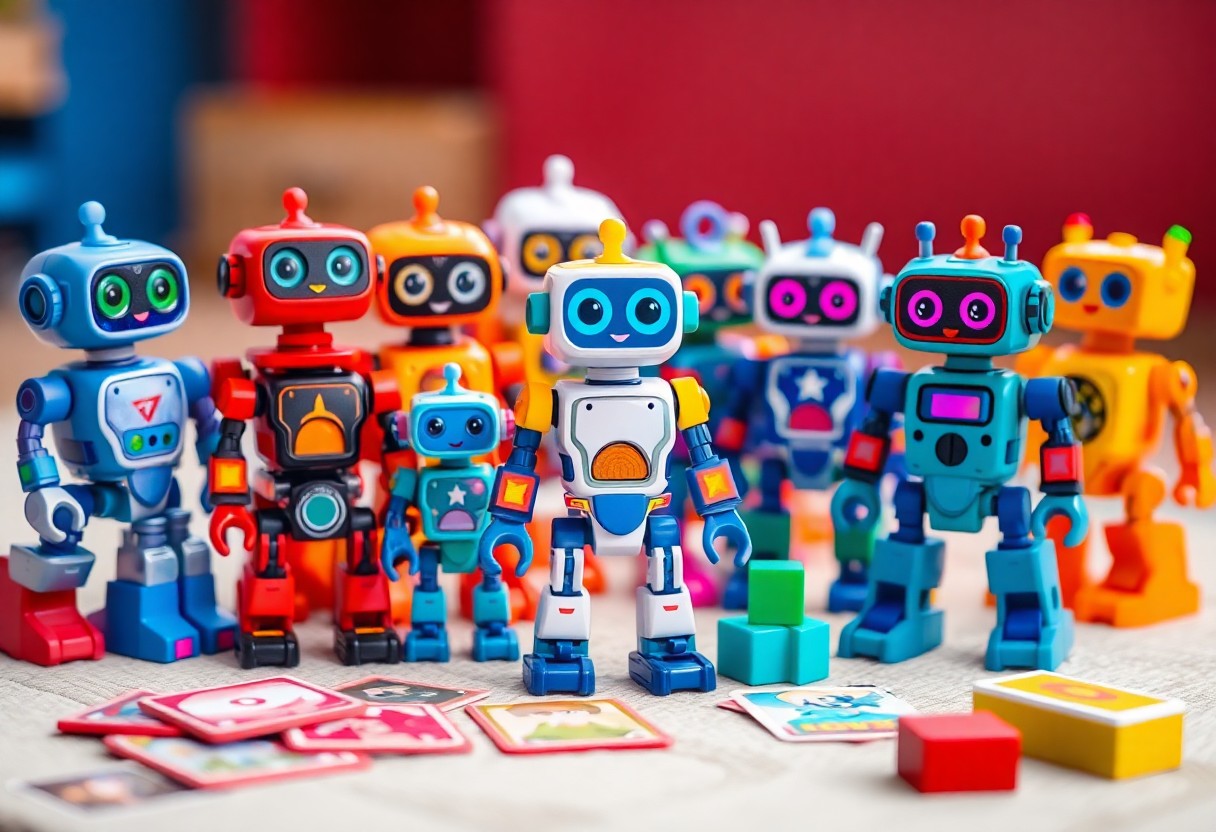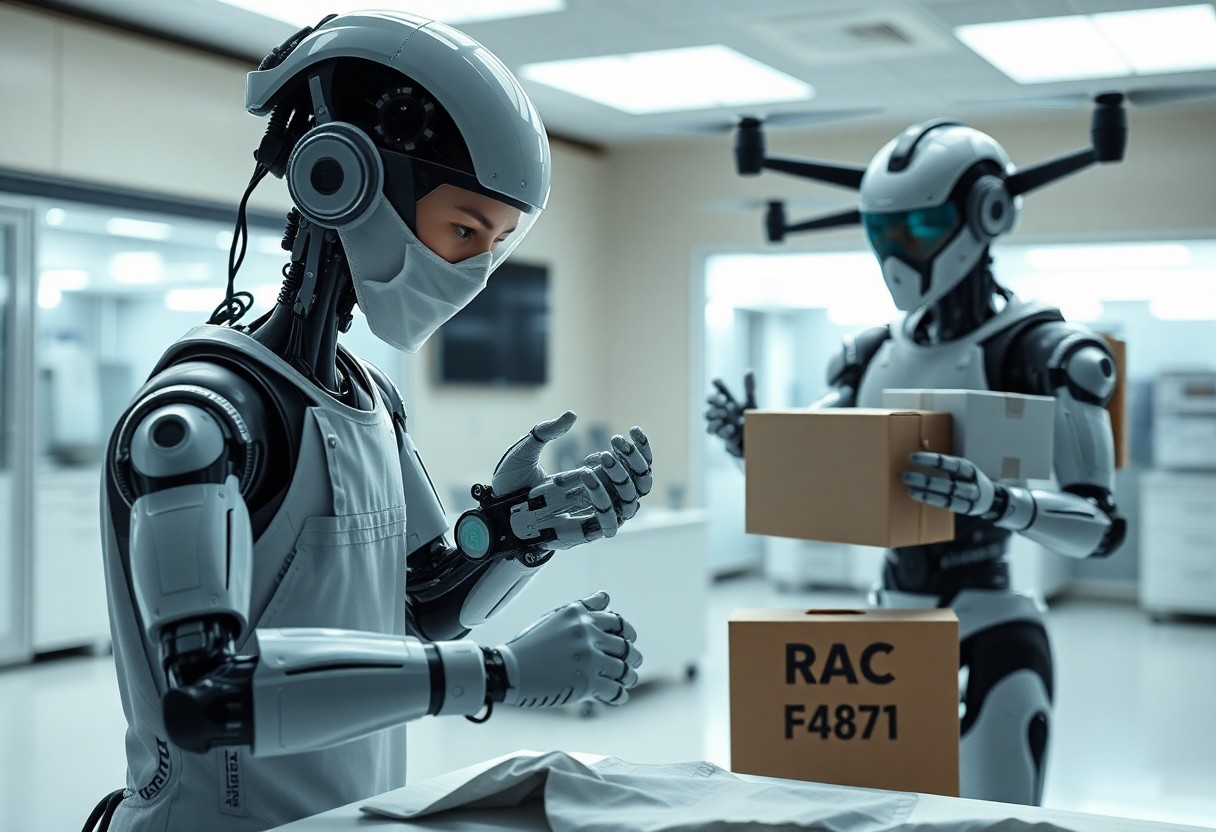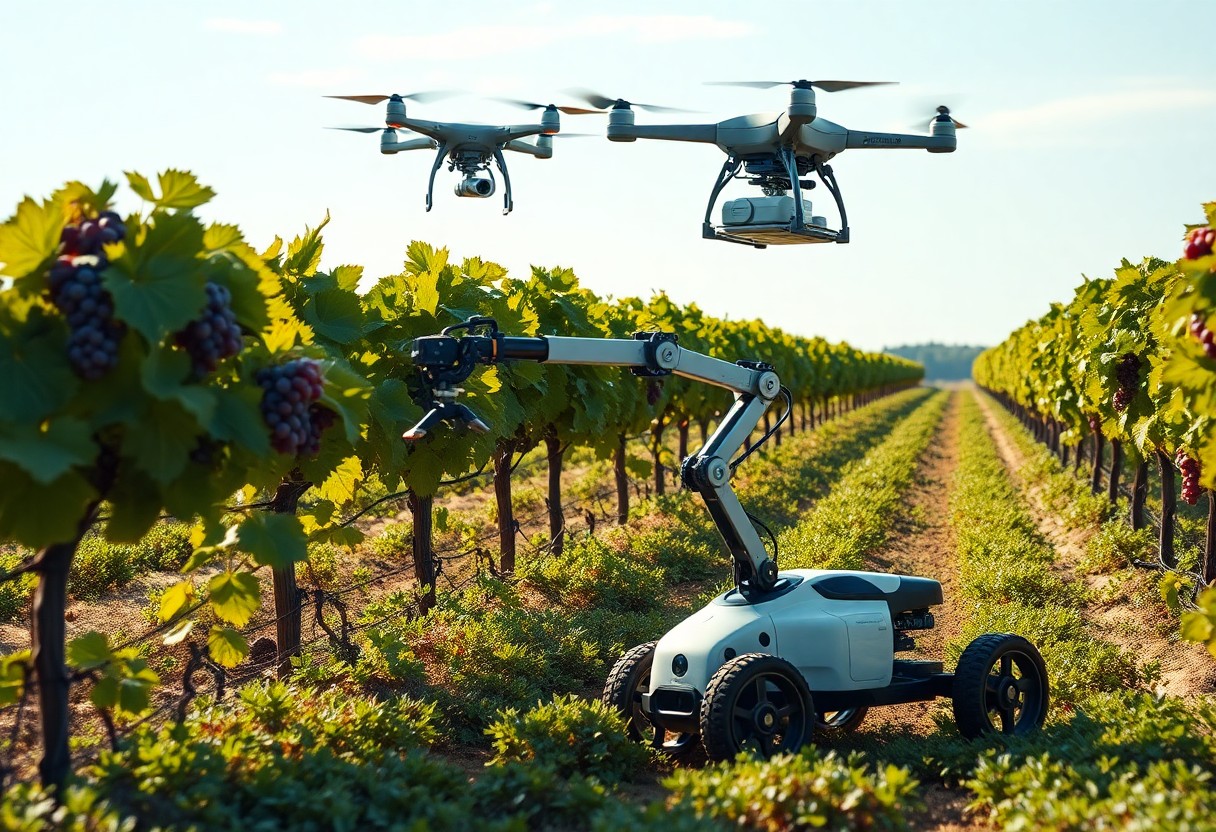There’s a significant transformation happening in manufacturing with the integration of industrial robots and flexible production lines. By understanding how these advanced technologies streamline processes, enhance productivity, and reduce costs, you can better position your operations for success. This post will guide you through the benefits and implications of adopting industrial robotics, allowing you to optimize your production capabilities and respond swiftly to market changes.
Overview of Industrial Robots
Industrial robots are automated machines designed for various production tasks, significantly enhancing efficiency and precision in manufacturing environments. With capabilities ranging from assembly and welding to painting and packaging, these robots operate continuously and are programmable to perform complex sequences. Their integration into production lines reduces human error and increases throughput, enabling companies to meet the growing demand for high-quality products at lower costs.
Types of Industrial Robots
Several types of industrial robots exist, each tailored for specific functions. Common categories include:
- Articulated Robots
- SCARA Robots
- Delta Robots
- Collaborative Robots (Cobots)
- Cartesian Robots
Any manufacturer can benefit from selecting the appropriate type based on their production needs and available space.
| Type | Description |
| Articulated Robots | Robots with rotary joints, good for complex tasks. |
| SCARA Robots | Best for assembly applications with a restricted range of motion. |
| Delta Robots | Designed for high-speed packaging tasks. |
| Collaborative Robots | Work alongside humans without safety barriers. |
| Cartesian Robots | Operate on three linear axes, offering high precision. |
Applications in Manufacturing
Industrial robots play a vital role in manufacturing across various sectors, streamlining processes to meet precise operational demands. Their versatility allows for deployment in assembly lines, quality control, material handling, and even hazardous environment tasks, freeing human workers for more complex responsibilities.
Many industries have witnessed substantial productivity gains through the implementation of industrial robots. For instance, automotive manufacturers employ robotic arms for precision welding and painting, improving product quality and reducing cycle times. In electronics, robots automate component assembly, ensuring consistent quality and efficiency. The food and beverage industry utilizes robots for packaging and palletizing, minimizing contamination risks and enhancing throughput. With the rise of smart factories, the integration of robots into IoT systems further optimizes production, creating a more responsive and flexible manufacturing landscape.
Flexible Production Lines
Flexible production lines utilize advanced technology, including industrial robots, to adjust quickly to changing demands and product types. These lines enable manufacturing facilities to produce a variety of products without extensive reconfiguration, resulting in efficient operations and reduced downtime. By employing modular designs and smart automation, flexible production lines can adapt to new specifications, ensuring high productivity even in fluctuating market conditions.
Definition and Characteristics
Flexible production lines are systems designed to manufacture varying products with minimal changeover time. Key characteristics include modular equipment, adaptive software, and integration of robotics. These systems can quickly switch between different tasks or product styles, allowing for streamlined operations while minimizing disruption. This flexibility helps factories respond promptly to consumer demands, market trends, and unforeseen challenges.
Benefits of Flexibility in Production
The ability to adapt production lines provides significant advantages, such as enhanced responsiveness to market changes, reduced lead times, and cost savings. Flexible production enables you to efficiently allocate resources, minimize inventory, and prioritize high-demand products. You can also decrease labor costs by using multi-tasking robots, which can shift between tasks seamlessly, further optimizing production efficiency.
Implementing flexibility in production lines leads to increased competitiveness in the marketplace. For instance, manufacturers who can pivot between product lines within hours gain a distinct edge over those stuck in rigid processes. Studies show that flexible manufacturing can reduce production lead times by up to 50%, allowing companies to meet customer needs swiftly. Organizations that embrace this adaptability can better manage risks associated with fluctuating demand, optimize resource allocation, and foster innovation as they explore new product lines, ultimately driving growth and profitability.
Integration of Robots in Flexible Production
Integrating robots into flexible production lines requires seamless coordination between various systems and technologies. Utilizing advanced software and robotics can enhance manufacturing processes, allowing you to quickly adapt to market shifts. For insights on innovations in this area, explore How Robotics Are Transforming Production Lines in 2025.
Challenges of Integration
One major challenge in integrating robots is the need for existing systems and new technology to communicate effectively. Disparate machinery may have compatibility issues, leading to delays and increased costs. Additionally, training your workforce to operate and maintain new robotic systems can be a daunting task, especially in industries accustomed to traditional methods.
Solutions and Best Practices
Implementing a phased approach to integration proves beneficial. Start by identifying key production areas where automation can yield the highest benefits. Collaboration with technology providers ensures that you receive tailored support and training. Regular updates and maintenance of robotics, along with continuous feedback loops, enhance overall performance and adaptability.
Employing solutions such as simulation software allows you to visualize the integration process before implementation, thus minimizing disruptions. Consider developing a comprehensive training program for your staff, focusing on both theoretical understanding and practical skills related to robotic operations. Utilizing pilot projects can help in assessing the viability of the integration process, allowing you to make data-driven decisions moving forward. These steps collectively foster a smoother transition to an automated environment, ensuring that you fully leverage the advantages of flexible production lines.
Case Studies of Successful Implementation
Numerous companies have successfully integrated industrial robots into their flexible production lines, showcasing the significant benefits of automation. These case studies highlight improved efficiency, reduced labor costs, and increased production capabilities.
- Company A achieved a 30% increase in production speed by implementing robotic arms, reducing labor costs by 25% within a year.
- Company B saw a 40% reduction in product defects after introducing automated quality inspections, leading to customer satisfaction scores jumping from 85% to 95%.
- Company C reported a 50% decrease in downtime through the deployment of collaborative robots, ensuring continuous operation and enhanced flexibility.
- Company D integrated robots into assembly lines, reducing its time-to-market by 35%, opening new revenue streams within six months.
Examples from Various Industries
Across different sectors, the application of robots in flexible production lines consistently demonstrates remarkable results. In automotive manufacturing, a leading company adopted robotic welding, lowering cycle times by 20%. The electronics industry benefits from precision assembly robots that maintain consistent quality at increased speeds, mitigating errors and enhancing output. Even food processing industries have embraced automation, with one major player increasing packaging efficiency by 40% through robotic systems.
Lessons Learned
The deployment of industrial robots in flexible production lines reveals valuable insights that can guide future implementations. Understanding the importance of customizable robotics solutions tailored to specific production needs promotes efficiency. Additionally, employee training plays a critical role in maximizing robotic potential, ensuring smooth collaboration between human workers and machines.
Identifying and addressing potential integration challenges early can prevent disruptions down the line. Establishing a modular approach allows you to adapt your robotic systems as your production demands change, fostering long-term flexibility. Emphasizing ongoing training and support for staff ensures they can leverage automation technology effectively, ultimately leading to enhanced productivity and a more agile manufacturing environment.
Future Trends in Industrial Robotics
Emerging trends in industrial robotics are set to reshape production environments significantly. Innovations in artificial intelligence, machine learning, and IoT are driving a new era where robots work alongside humans, enhancing efficiency and flexibility. As you look to the future, understanding these trends will help you stay competitive in an ever-evolving market.
Advancements in Technology
Technological advancements are leading to smarter, more collaborative robots. Innovations such as computer vision and haptic feedback allow robots to perform intricate tasks with increased precision. These enhancements improve operational efficiency and create safer working environments, enabling you to maximize productivity while minimizing risk.
Predictions for the Industry
The future of industrial robotics promises significant growth, with predictions suggesting a 20% annual increase in adoption rates. By 2030, experts forecast that the global robotics market will surpass $500 billion, emphasizing the importance of integrating these technologies to maintain competitive edges in production capabilities.
As you prepare for these industry shifts, anticipate an acceleration in collaborative robots (cobots) entering workplace settings, designed to enhance human-robot interaction without safety concerns. Additionally, advancements in AI will enable more autonomous operations and predictive maintenance, significantly reducing downtime. Companies leveraging these technologies will likely see lower operational costs and increased output, establishing a clear competitive advantage in the marketplace.
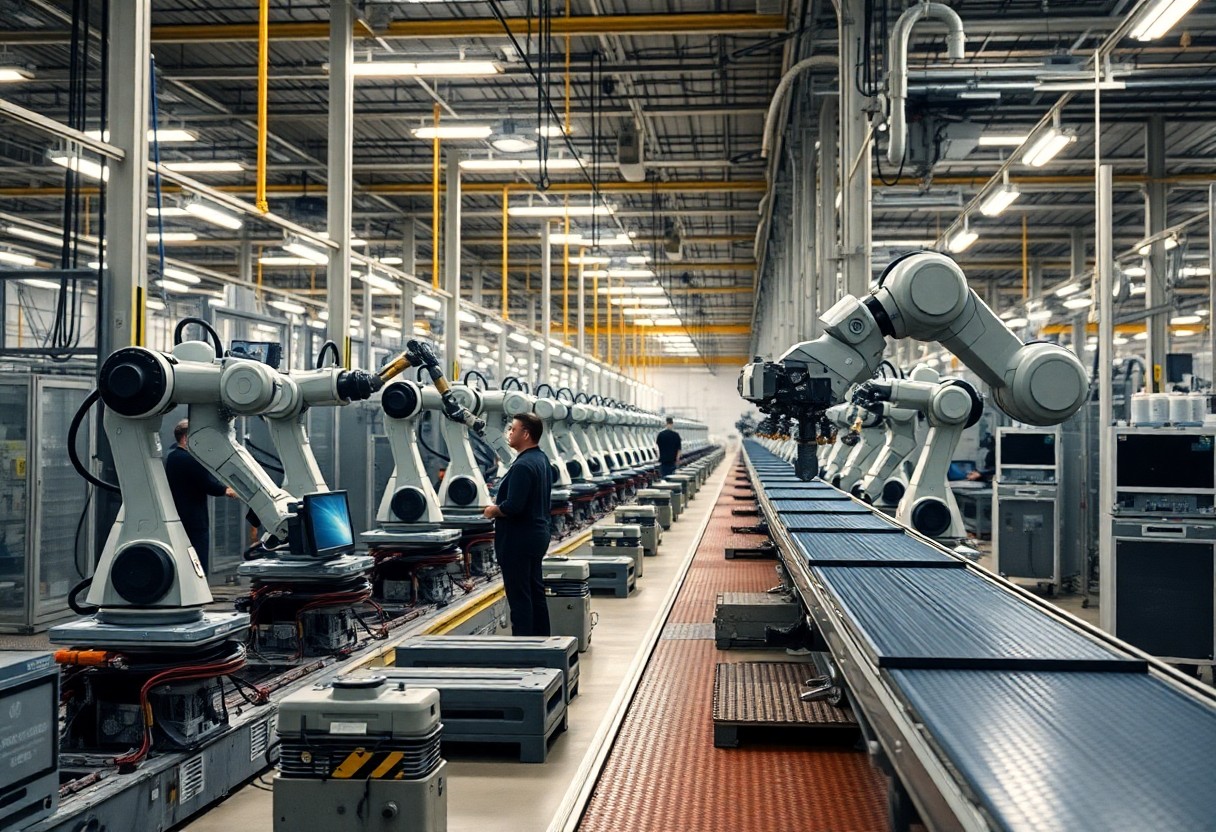
Economic Impact of Robotics and Flexibility
The integration of robotics and flexible production systems significantly reshapes economic landscapes, enhancing productivity while reducing costs. Companies adopting these technologies often experience improved efficiency, allowing them to respond agilely to market demands. For instance, manufacturers implementing robots have reported productivity increases of up to 30%, translating into tangible economic benefits. This adaptability can lead to higher profitability, enabling firms to reinvest in innovation and workforce development.
Cost-Benefit Analysis
A comprehensive cost-benefit analysis reveals that upfront investments in robotics yield substantial long-term savings. While the acquisition of robotic systems may seem daunting, the reduction in labor costs, increased production speed, and minimized errors collectively enhance profitability. Businesses often recoup their initial investments within two to five years, leading to a favorable return on investment over time.
Effects on Employment and Skill Demand
The adoption of robotics alters the employment landscape and shifts skill demands within the industry. While some routine jobs may be automated, new roles emphasizing technical skills and oversight emerge, requiring workers to adapt. Educational programs and upskilling initiatives are necessary in equipping your workforce to handle advanced technologies efficiently.
As robotics proliferate in flexible production lines, job profiles evolve significantly. For example, while assembly line jobs traditionally filled by manual laborers may decrease, the demand for technicians and engineers who can program, maintain, and optimize robotic systems rises sharply. Industry estimates suggest that by 2025, the need for highly skilled workers in automation could increase by 20%, reinforcing the importance of investing in training and workforce development. This shift not only helps mitigate job displacement but also positions your organization to thrive in an increasingly automated future.
Final Words
Drawing together the benefits of industrial robots and flexible production lines, you find that this integration allows you to enhance efficiency, reduce costs, and adapt swiftly to market changes. These advanced systems empower your business to optimize resource allocation while maintaining high product quality. By embracing this technology, you position yourself at the forefront of innovation, equipping your operations to meet evolving consumer demands. Ultimately, leveraging industrial robots and flexible production lines ensures your competitive edge in today’s dynamic manufacturing landscape.

